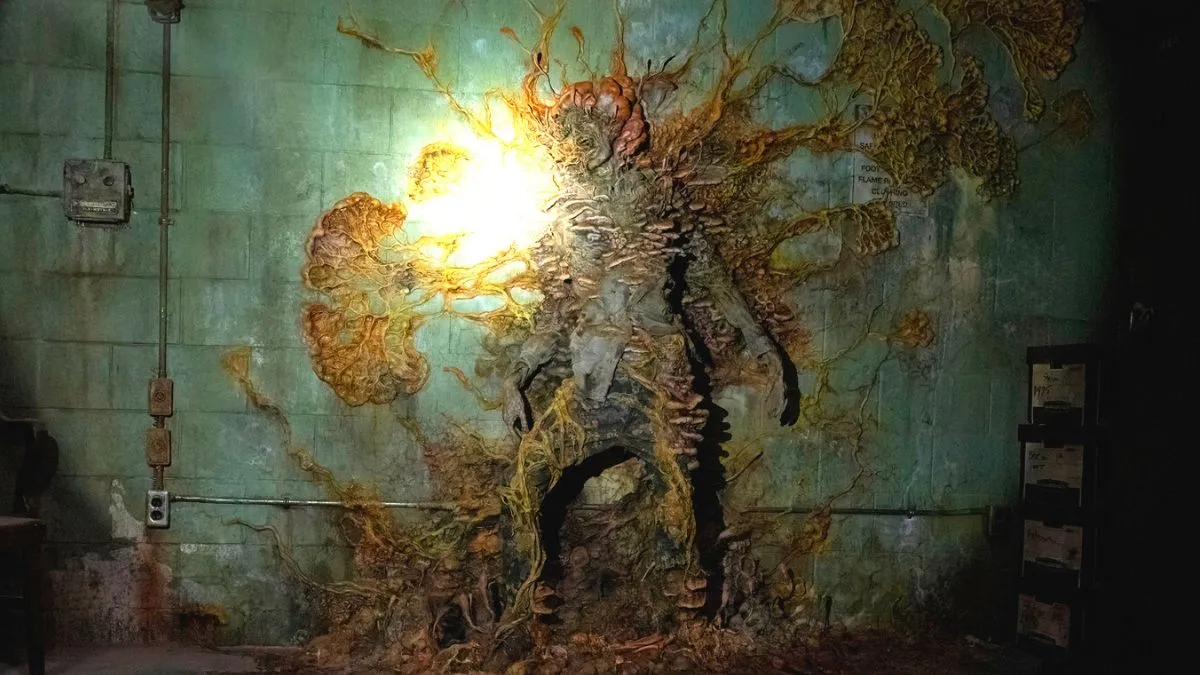Anyone who’s anyone has seen HBO’s The Last of Us.
Whether they’re gripping the edge of their seat in anticipation or merely glimpsing the promotional material in passing, Craig Mazin’s faithful adaptation of Naughty Dog’s insanely popular PlayStation franchise is taking the world by storm. For the uninitiated among us, The Last of Us follows a smuggler named Joel who’s tasked with transporting Ellie, a teenaged girl, across a post-apocalyptic America in the midst of a fungal infection outbreak that’s plagued the world for decades. Along the way, Joel and Ellie form an unlikely bond as two hardened survivors.
Early on in both versions of the same story, we discover the pandemic was the result of a mutated strand of Cordyceps fungus. Though mainly an issue among insects, The Last of Us explores a hypothetical future in which Cordyceps evolves to infect humans, thereby effectively triggering a zombie apocalypse. In the TV adaptation, as seen in the opening sequence for The Last of Us‘ debut episode, “When You’re Lost in the Darkness,” scientists are already warning humanity that Cordyceps is capable of becoming a societal threat. In the games, however, the infection seemingly comes out of nowhere, and its origins are never truly explained. What are the other differences between Cordyceps as it appears in the games versus the TV show?
What was the Cordyceps brain infection (CBI) inspired by?
In case you were curious to learn whether Cordyceps exists in the real world: it does. In fact, Naughty Dog drew inspiration for the CBI from an episode of the BBC documentary Planet Earth titled “Jungles,” narrated by none other than Sir David Attenborough. In the episode, which explores the deadly effects of Ophiocordyceps unilateralis, we see an infected ant being killed by the fungus, as well as a variety of other insects and arachnids being taken down by the many species of Cordyceps.
“It was all based on the idea that the more numerous a species becomes, the more likely it is to be preyed on by this fungus,” creative director Neil Druckmann said.
Realistically, the Cordyceps is very much dramatized for the sake of making The Last of Us terrifying and immersive, and it’s rather impossible for humans to be fatally infected by the Ophiocordyceps genera. At the most, infected humans would potentially undergo minor behavioral changes.
In the show, the infection spreads through tendrils
Only a few episodes in, it’s clear to see how Cordyceps spread so rapidly in the HBO adaptation. Our first introduction to the infection is a wheelchair-bound woman living next door to Joel and Sarah. In the premier episode, Sarah stops by to check in on her neighbors, and finds one of them badly injured. The previously wheelchair-bound woman — now mobile — soon attacks Sarah, charging at her with tendrils protruding from her mouth.
Later, we’re given a first-hand look at how the Cordyceps spreads when Tess meets her maker in the second episode, titled “Infected.”
After reaching the Capitol building, Tess reveals she’s been bitten, meaning that she’ll eventually turn. It should be mentioned that one method of contracting Cordyceps is through oral contact, but individuals who are bitten will also turn within a matter of hours. Generally speaking, the oral route is more direct and therefore faster. Once Tess accepts her fate, she clears a path for Joel and Ellie to escape and elects to stay behind. When the infected swarm the building, Tess is approached by a runner who breaks away from the pack and inspects her. With tendrils poking out of its mouth, the infected kisses Tess and finalizes the spread of the Cordyceps. Before she fully loses herself to the virus, however, Tess ignites a trail of gasoline and burns herself — and the horde of infected — alive.
We’ve also come to realize that, in the HBO series, Cordyceps works like a hive mind. If you injure or kill one infected, a dozen others will sense the disturbance and pinpoint your location, soon hunting you down in swarms.
In the game, the infection spreads through spores
It’s apparent in Naughty Dog’s version that Cordyceps spreads through airborne spores. These spores are left in an infected’s wake, allowing the contagion to fill the lungs of whomever breathes it in. In order to avoid the spores, characters wear gas masks. We see Joel and Tess donning these during their earlier ventures, but Ellie — who is immune to Cordyceps — doesn’t need one.
Then there’s the virus origins. In Joel and Sarah Miller‘s local newspaper, The Texas Herald, a small note indicates that Cordyceps originated from South America and spread through infected crops.
It explains that “the Food and Drug Administration’s investigation of crops potentially tainted with mold continues across the country. Initial lists distributed to vendors nationwide warned against crops imported from South America, but now the scope has extended to include Central America and Mexico. Several companies have already voluntarily recalled their food products from the shelves.”
All of this happened in late 2013, in the game, but just a few months later roughly 60 percent of humanity was either killed or infected by Cordyceps, which received its official medical name shortly thereafter. Cordyceps grows while the host is still alive, with hosts undergoing four stages of infection, commonly referred to as Runners, Stalkers, Clickers and Bloaters.
